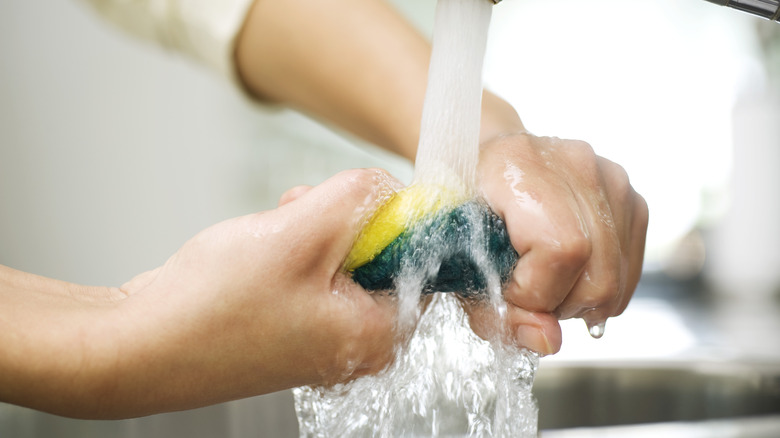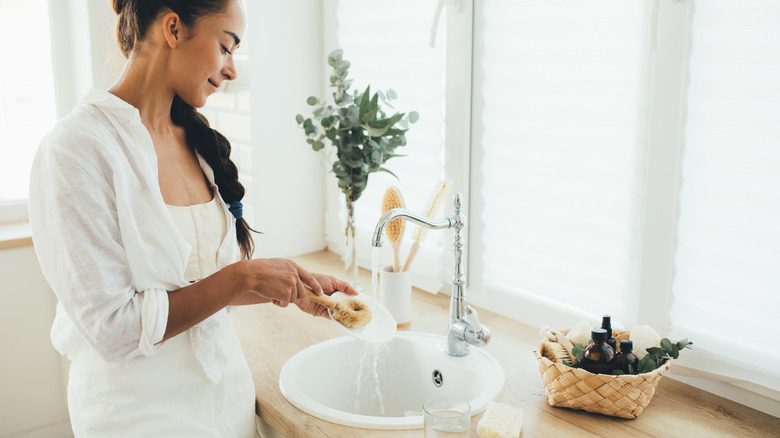What Are Kitchen Sponges Made Of? (Plus Some Environment-Friendly Alternatives)
We may receive a commission on purchases made from links.
Dish sponges have been around for what feels like forever, and it's almost a given that you have one on the side of your sink or in your cupboard right now. It's not entirely off base to say that sponges have always been around, as sea sponges have been used as a bath tool since the Middle Ages. While it's true that humans have pretty much always used sponges in some form or another, the modern dish sponge wasn't invented until about 1937. That's thanks to Otto Bayer, a German scientist who is credited with inventing polyurethane foam. Polyurethane is a synthetic polymer that is something like a combination of rubber and plastic, offering elasticity, flexibility, and durability. This was the substance used for the first kitchen sponges, which replaced dishwashing rags.
Most modern kitchen sponges are made from polymer foams, which can include natural rubber, silicone rubber, ethylene-propylene-diene monomer (EPDM) rubber, as well as plastics. While these materials are fantastic in that they are durable and do a great job against stuck-on messes, they also have one major issue: They do not go away. Long after you've scrubbed your last pan with them and sent them to the trash, these sponges will sit in a landfill for up to 1,000 years. As many of us try to make greener cleaning product choices in our homes, it's clear there needs to be an alternative. Luckily, there are many products that are just as effective as standard sponges but don't have the same impact on the environment, such as cellulose, coconut husk, and bamboo.
Eco-friendly but powerful sponge alternatives
While you may be obsessed with the spongey texture and how easy it is to use, there are still some greener alternatives out there, like sponges made from cellulose. Cellulose is found in the cell walls of organic plants like leaves and vegetables and can be turned into a foamy, spongy texture. Cellulose isn't quite as durable as polymer foam, but it is far less harmful to the environment as pure cellulose sponges can decompose completely in just a few weeks. These dual-sided natural sponges from Scrubit, available from Amazon for $15, use wood pulp cellulose on the spongy side; coconut shell and agave make up the abrasive scouring pad side.
Some folks have ditched sponges altogether because the dirty truth behind your kitchen sponge is that they are harbors for bacterial growth. In that case, you could consider a bamboo scrub brush. Bamboo scrub brushes are one of the best eco-friendly kitchen products you should own, as the bristles are stiff enough to power through stuck-on and burnt food stains, but totally natural. Plus, they have a handle which means your hands and nails won't get dried out from exposure to soap and hot water. You can buy a set of three Airnex bamboo dish brushes from Amazon for $13.
Swedish dishcloths have become popular as a cost-effective paper towel alternative, but they are equally as useful as a green sponge alternative, especially if you are used to using a sponge to wipe down your countertops. They are made from cellulose wood pulp and cotton and work like a hybrid paper towel and sponge combination. Check out this darling six-pack of Harps & Seb dishcloths on Amazon for just $17.

